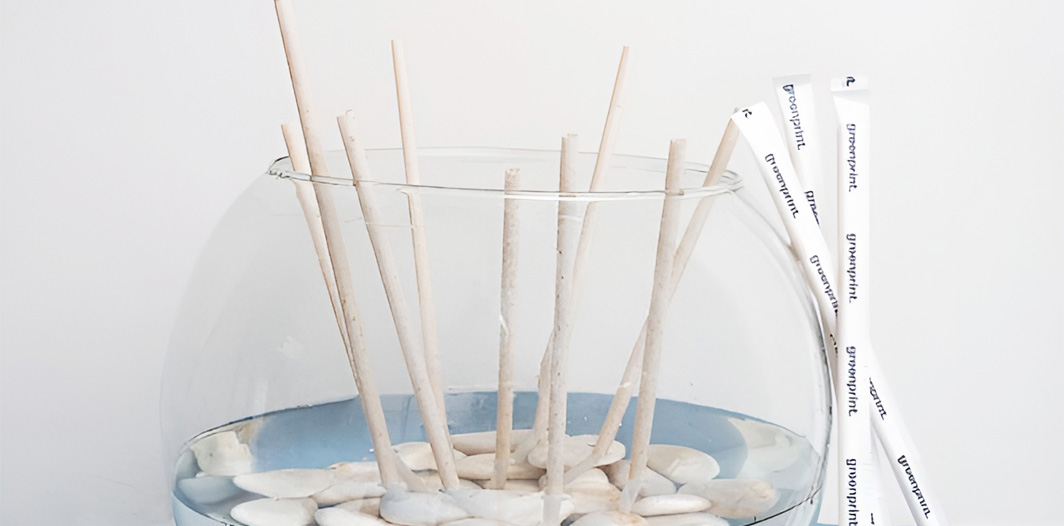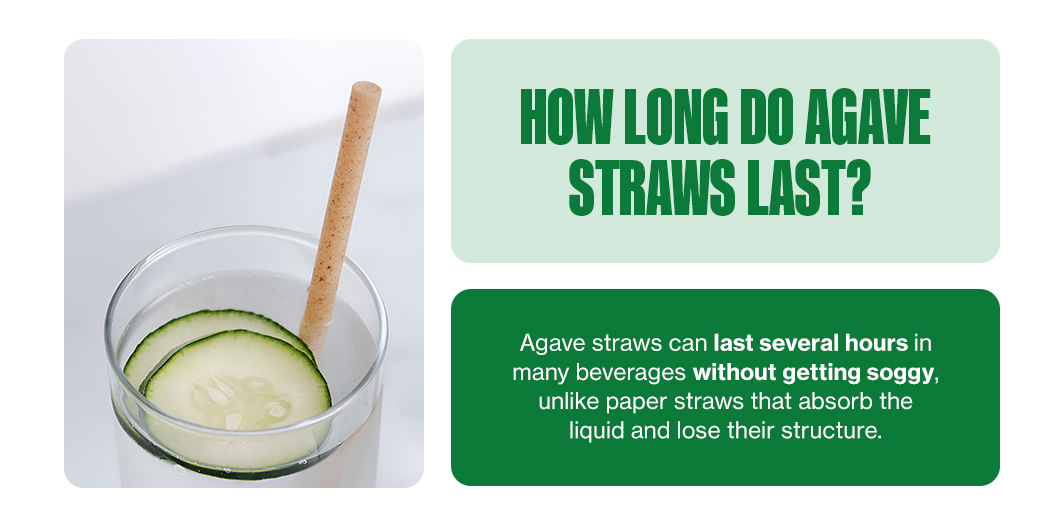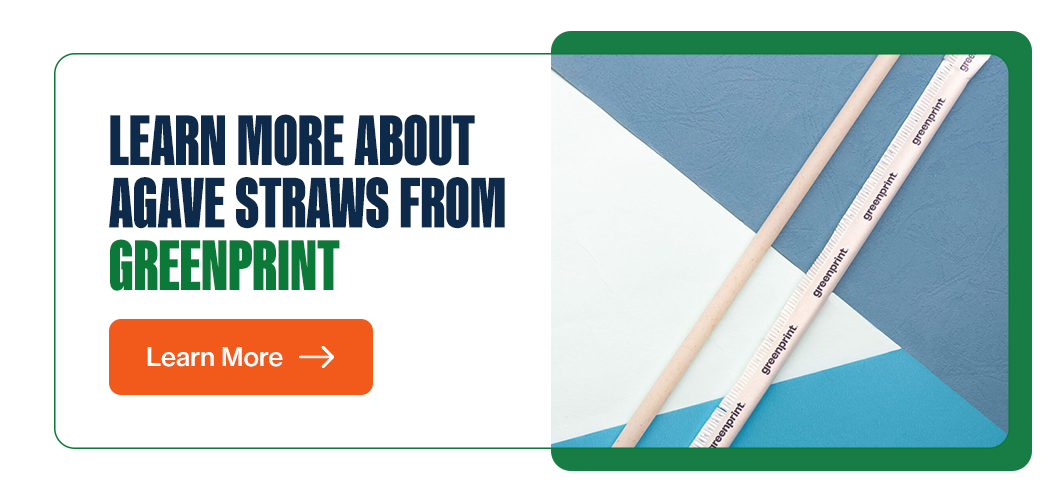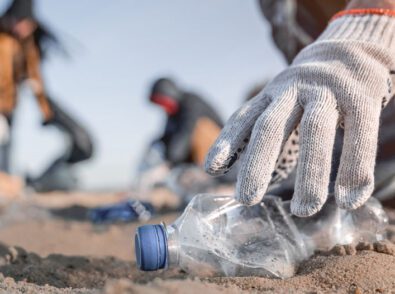All About Agave Straws

Agave straws are made from agave fibers and are eco-friendly alternatives to plastic straws. They are one of the many types of sustainable straws designed to help reduce single-use plastic waste.
Compared to other sustainable straws, agave fiber straws are known for their sturdy and natural composition and aesthetically pleasing look that can enhance beverage presentation in upscale venues.
As a restaurant owner or someone seeking plastic alternatives, you want to make responsible choices that reduce plastic waste, meet eco-conscious consumer demands, and align with environmentally friendly practices. In this guide, you’ll learn what agave straws are made of, their benefits, and how using them can support your sustainability efforts.
How Are Agave Straws Made?
Agave straws are made by extracting fibers from agave plants and crafting them into sturdy, biodegradable straws. Previously, the process of making tequila and mezcal left the tall, leafy, fibrous parts of the plant behind. These discarded fibers—called bagasse—can be repurposed to create sustainable agave fiber straws instead of being burned or disposed of in landfills.
The steps involved in extracting fibers and producing straws typically include:
- Harvesting agave plants: Mature agave plants are harvested, cleaned, and divided to obtain their fibrous leaves.
- Collecting fibers: Forest Stewardship Council (FSC)-certified waste fibers with little to no nutrients or minerals are collected for upcycling.
- Extracting fibers: The leaves are crushed or prepped to extract the fibers within them.
- Drying and processing: The fibers are dried and processed to make them pliable for straw crafting. Quality control ensures very low product variation with the raw material. The proprietary process makes the fibers compatible with other polymers.
- Crafting straws: The processed fibers are molded into various straw sizes and shapes. Our state-of-the-art polymer compounding capabilities allow us to formulate raw materials compatible with traditional manufacturing processes.
- Quality control: The final agave straws undergo quality control checks to ensure they meet standards for durability and safety.
Benefits of Agave Straws
Consumers and businesses that use agave fiber drinking straws contribute to reducing plastic waste and promoting environmentally friendly practices. Compared to other eco-friendly straw materials, agave options have the following benefits:
- Repurposing waste: Agave straws repurpose agave plant fibers left over from tequila production. Producers would otherwise discard this material.
- Durable: These durable straws maintain their structural integrity even with prolonged use, making them suitable for multiple drinks without getting soggy like paper straws.
- Reusable: Agave straws are reusable and offer a sustainable option for consumers and businesses looking to minimize waste.
- Versatile: Agave straws can be used for hot and cold beverages, including water, coffee, tea, alcohol, lemonade, smoothies, shakes, soft drinks, and juice.
- No aftertaste: These straws leave no aftertaste, providing a clean drinking experience without altering the flavor of beverages.
- Aesthetic appeal: Agave straws offer a unique and cool look, with a natural, earthy color and texture derived from the agave fibers.
- Positive brand image: Businesses that use agave straws can create a positive brand image, attract new customers through word-of-mouth referrals, increase customer loyalty, and enhance their bottom line while protecting the planet.
- Employee engagement: Adopting eco-friendly practices, like using agave straws, can attract employees who prefer working at environmentally conscious companies, contributing to a positive work culture.
- Eco-friendly: Agave straws are biodegradable, reducing land and ocean pollution.
How Long Do Agave Straws Last?

Agave straws can last several hours in many beverages without getting soggy, unlike paper straws that absorb the liquid and lose their structure.
The life span of agave straws depends on how often you use them. With proper rinsing or cleaning after every use, they can last for a few months to more than a year. They will eventually wear out and naturally decompose over time, as agave straws are biodegradable.
How Long Does it Take Agave Straws to Biodegrade?
When disposed of, these straws decompose in a few years. Agave straws break down by 95% in the first 180 days in an active landfill. The exact rate at which they degrade depends on their composition and environmental conditions:
- Natural agave straws: These natural straws are made with verified recycled plastics and FSC-certified plant fibers, and they degrade in one to three years in bioactive landfills.
- Home compostable agave straws: Polyhydroxyalkanoates (PHA) straws are formulated from canola seeds and agave fibers. These biopolymers contribute to the straws’ quick breakdown on land or in the ocean.
- Home agave straws: These biofading straws are made from recycled plastics and FSC-certified agave fibers, ensuring they degrade naturally.
Are Agave Straws Compostable?
Agave straws may be compostable, but it depends on the brand and materials used within the straw. While agave straws are made from natural fibers, the process of composting differs from biodegrading and doesn’t apply to all agave straws.
Biodegradable refers to a material’s ability to break down naturally into simpler substances through microorganisms. This process occurs in various environments, which may include composting facilities. However, not all biodegradable straws are compostable.
Compostable materials break down into natural elements in an environment under specific conditions within a set timeframe. These conditions happen in industrial composting facilities or home compost bins. Compostable materials degrade into nutrient-rich organic matter that can enrich soil and support plant growth.
Greenprint marine products, including home-compostable agave straws, are certified as home and industrial-compostable. Marine products are made from canola and soy seeds and break down similarly to wood or cellulose. You can discard these items in a compost bin or a regular trash can, and microorganisms will consume the products entirely as a carbon food source.
Additional Details About Agave Straws
Learn more about agave straws and their sustainability.
How Do You Clean Agave Straws?
Rinse your straw with warm water after every use to remove any residue. For more thorough cleanings, use a small brush. You can also hand wash your straws with mild soap and water. Soak the straws in a water and vinegar solution if there are stubborn stains or odors. Rinse and air dry them before using.
Are Agave Straws Edible?
No. Agave straws are only for sipping. They often contain other materials and biopolymers that you should not consume.
Do Agave Straws Contribute to Deforestation or Harm Agave Plant Populations?
At Greenprint, our agave straw is sustainably sourced from agro-industrial waste and locally sourced raw materials. We ensure plant fibers are harvested and collected responsibly without harming plant populations or the environment.
Learn More About Agave Straws From Greenprint
Agave straws are eco-friendly, sustainable alternatives to traditional, single-use plastic straws. They’re available in different sizes and are free of bisphenol A (BPA) and per- and polyfluoroalkyl substances (PFAS). These straws are ideal for businesses and consumers who want to reduce their environmental impact without compromising on sturdiness and durability.
Whether you need bulk or smaller quantities, Greenprint offers agave straws that provide peace of mind and help prevent unnecessary pollution. Explore our range of plant-based straw selections and other sustainable products.







